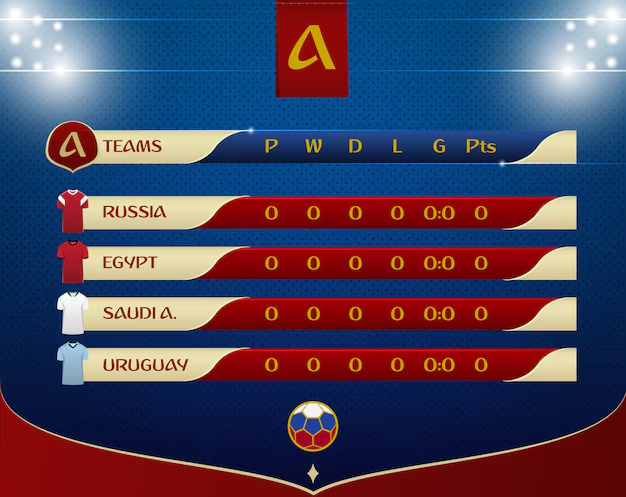In the Tournament Rankings cutthroat scene of sports, competition rankings act as an essential sign of execution, notoriety, and movement. Whether it’s tennis, golf, chess, or some other game, these rankings are something other than numbers — they are an impression of expertise, consistency, and assurance. For devotees, experts, and relaxed fans the same, the New York Times (NYT) offers a sagacious investigation of these rankings, giving nitty gritty inclusion that assists perusers with remaining educated and locked in.
What Are Tournament Rankings and Why Do They Matter?
Competition rankings are a methodical method for assessing and look at the exhibition of competitors or groups over a particular period. They are resolved in light of different factors, for example, wins, misfortunes, focuses scored, and the meaning of the competitions where the contenders partake.
In the realm of pro athletics, rankings can impact a player’s vocation direction. For example, in tennis, a higher positioning can prompt better cultivating in competitions, which thus expands the possibilities progressing further in rivalries. In group activities, rankings can decide season finisher positions, which are pivotal for getting titles.

The NYT’s Approach to Tournament Rankings
The New York Times has set up a good foundation for itself as a trustworthy hotspot for sports reporting, presenting top to bottom investigation and constant reports on competition rankings across different games. The NYT’s way to deal with covering these rankings is both scientific and story driven, giving perusers an exhaustive comprehension of how the rankings are determined and what they mean for the players or groups included.
Key Features of NYT’s Tournament Rankings Coverage:
- Information Driven Investigation: The NYT use broad information to offer experiences into player execution and positioning variances. This information is much of the time introduced in a manner that is open to perusers, even the people who may not be know about the details of the game.
- Context oriented Accounts: Past the numbers, the NYT gives setting by talking about the meaning of ongoing exhibitions, authentic examinations, and likely future results. This story approach assists perusers with associating with the tales behind the rankings.
- Master Discourse: The NYT highlights sentiments and investigations from prepared sports writers and previous competitors, offering interesting points of view on the present status of rankings and expectations for future competitions.
How Tournament Rankings Are Calculated
Understanding how tournament rankings are calculated is essential for interpreting their significance. The methodology varies depending on the sport, but several common factors influence these rankings:
1. Points System
Many games utilize a focuses framework to decide rankings. Players or groups procure focuses in light of their exhibition in authorized competitions. For example, in tennis, the Relationship of Tennis Specialists (ATP) and the Women’s Tennis Connection (WTA) use a centers based structure where players get centers considering how far they advance in rivalries, with extra elevated contests offering more core interests.
2. Tournament Weighting
Not all competitions are made equivalent. Significant competitions like Huge homeruns in tennis or the World Cup in soccer convey more weight in the rankings than more modest, local competitions. The NYT frequently features these differentiations in their inclusion, assisting perusers with understanding the reason why certain exhibitions influence rankings more essentially than others.
3. Recent Performance
Late execution is a basic calculate most positioning frameworks. Rankings are ordinarily refreshed consistently, mirroring the latest competitions. This guarantees that the rankings stay pertinent and precisely address the ongoing type of players or groups.
4. Head-to-Head Records
In certain games, straight on records between contenders can impact rankings. For example, in the event that two players have a past filled with close matches, their no holds barred record may be viewed as in positioning estimations, particularly in situations where their general point sums are comparable.
Implications of Tournament Rankings
The ramifications of competition rankings stretch out past the games field. For players and groups, rankings can influence everything from sponsorship arrangements to media consideration. Higher-positioned players frequently get more rewarding supports, while groups with higher rankings can draw in better ability and assets.
1. Seeding in Tournaments
One of the most quick effects of rankings is on competition cultivating. Higher-positioned players are normally cultivated higher, meaning they are put in places that are better for progressing through the competition. This can be a huge benefit, as it frequently implies confronting lower-positioned rivals in the early adjusts.
2. Financial Incentives
Many games associations offer monetary motivating forces in view of rankings. For instance, the ATP and WTA offer rewards to players who finish the year with a highest level. Additionally, in group activities, higher rankings can prompt more noteworthy income sharing, better sponsorship bargains, and expanded ticket deals.
3. Legacy and Career Longevity
For competitors, keeping a high positioning over the long haul can cement their heritage in the game. Predictable high rankings can prompt Corridor of Popularity acceptances, lifetime accomplishment grants, and different awards that honor a competitor’s commitments to their game.
NYT’s Coverage: A Resource for Fans and Professionals
The NYT’s inclusion of competition rankings isn’t only for relaxed perusers — it’s an important asset for experts in the games business. Mentors, examiners, and, surprisingly, the actual competitors frequently go to the NYT for the most recent updates and well-qualified suppositions.
Why NYT’s Coverage Stands Out:
- Validity: The NYT is known for its editorial uprightness and precision. With regards to sports rankings, perusers can believe that the data is dependable and well-informed.
- Profundity of Inclusion: Not at all like different distributions that might zero in on superficial revealing, the NYT digs profound into the complexities of rankings, offering itemized breakdowns that take special care of both amateur fans and prepared sports experts.
- Intelligent Highlights: The NYT frequently incorporates intuitive elements, for example, live rankings, player profiles, and verifiable information correlations. These devices permit perusers to investigate the rankings in additional detail and gain a more profound comprehension of the game.
Staying Updated with Tournament Rankings
Given the unique idea of sports, competition rankings are continually evolving. To remain refreshed, it’s fundamental to follow solid sources like the NYT, which gives constant updates and top to bottom investigation.
1. Subscribing to Updates
One of the most amazing ways of remaining informed is by buying into the NYT’s games area. This guarantees that you get the most recent news and rankings straightforwardly in your inbox, staying up with the latest on every one of the significant turns of events.
2. Engaging with the Community
The NYT’s inclusion frequently ignites conversations among fans and experts the same. Drawing in with these conversations, whether through remarks or web-based entertainment, can give extra experiences and points of view on the rankings.
3. Utilizing NYT’s Archives
The NYT’s broad chronicles permit perusers to investigate past rankings and exhibitions. This authentic point of view can be significant for grasping patterns and anticipating future positioning developments.

Conclusion
Competition rankings are something other than a proportion of progress — they are a window into the serious universe of sports. The NYT’s extensive inclusion offers perusers a top to bottom glance at these rankings, giving both the information and the story expected to see the value in their importance completely. By remaining educated and drew in with the NYT’s inclusion, perusers can improve how they might interpret the games they love and gain a more profound appreciation for the competitors who contend at the most elevated levels.
FAQs:
1. What are tournament rankings?
Competition rankings are a framework used to assess and look at the exhibition of competitors or groups in different games in light of their presentation in ongoing rivalries.
2. How are tournament rankings calculated?
Rankings are regularly determined utilizing a focuses framework, where players or groups procure focuses in view of their outcomes in competitions, with additional huge occasions offering more focuses.
3. Why are tournament rankings important?
Competition rankings decide cultivating in ongoing contests, impact monetary motivators, and can affect a competitor’s vocation amazing open doors and heritage.
4. How often are tournament rankings updated?
Most tournament rankings are updated regularly, often weekly or after each major tournament, to reflect the most current performance data.
5. Where can I find reliable tournament rankings?
Reliable tournament rankings can be found on sports organization websites, major sports news outlets like the New York Times, and official tournament sites.


